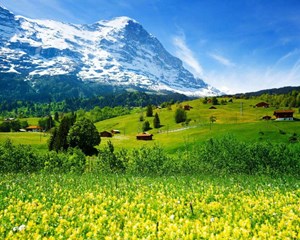Such are the plants which form the characteristic vegetable product of temperate regions. Wheat, which will not thrive in hot climates, flourishes all over the Temperate Zone, at various ranges of elevation. Maize spreads over an immense geographical area in North America, as well as in Southern Europe. Barley is cultivated in those parts of Europe and Asia where the soil and climate are not adapted for wheat; while oats and rye extend far into the bleak North, and disappear only when we reach those desolate Arctic regions where man cannot exist in his social capacity. By such striking adaptations of different varieties of grain to gradations of climate and varieties of soil, does Providence furnish the food indispensable for the sustenance of the human race.

Again: what are the trees that are most useful to man in a high state of civilization? Unquestionably those yielding the largest supply of common timber. Now the chief fancy wood trees—those which form part of man's luxuries—belong to the Tropics; but the pines and hard-wood trees—those which minister to man's necessities—belong distinctively to the Temperate Zone. The inhabitant of that zone must send to Honduras for mahogany, to Brazil for rosewood, to make his finer furniture; but the pine, the ash, the oak, the elm, the beech—the timber used in building his houses and workshops, the wood used in fashioning his tools and carts and carriages, and in making his most complicated machinery—these he finds abundantly in his own woods. They are reared in the same climate, they breathe the same air as himself.












